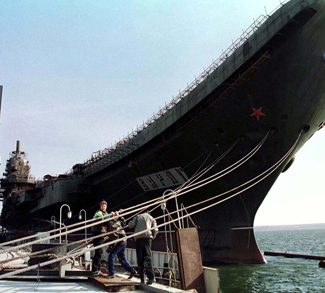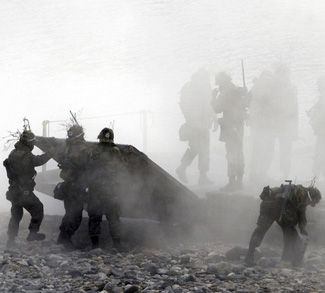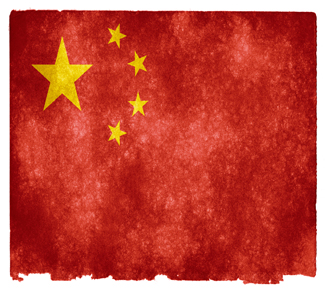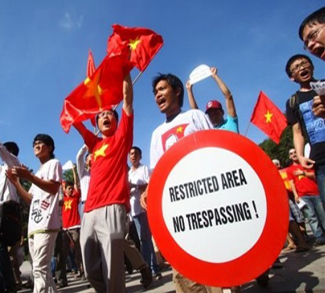Peaceful Rise, containment, encirclement, the ‘China Threat’ theory- though the times change the language stays the same. Experts are asking the same questions they were thirty years ago about China’s rise and the impact it will have on international society. It’s high time we throw away the rulebook of historical analogies and accept that this scenario is something completely different.
Aaron L. Friedberg recently wrote a piece for The National Interest entitled Hegemony with Chinese Characteristics. In it he argues that China has designs on becoming a dominant regional power, citing Sam Huntington’s observation that every rising power in the past has engaged in imperial expansion as their capabilities grew. To truncate his argument and deprive it of the due it deserves, he believes that China’s rise will continue to pose a threat as long as the China’s domestic political system remains closed and autocratic.
In the course of his article, he makes one important qualification, albeit one that’s there and gone in an instant. He writes “perhaps in a world of global markets and nuclear weapons, the fears and ambitions that motivated previous rising powers are no longer as potent.” That’s a fairly sizeable perhaps, and one that’s worth delving into if we’re ever going to move beyond the old paradigms of the China Threat theory.
It’s hard to separate legitimate suspicion over China’s designs on Asia from wider uncertainty surrounding the fate of the post-hegemonic international system. The two go hand in hand, and the core question that dominates the discussion is: Will the rising powers that inherit the international institutions that the United States established be as committed to them once they are not compelled to do so by preponderant American economic and military power?
Now for a little background on the type of theoretical thinking that underpins the China Threat theory. A hegemonic, unipolar international system, or one with a dominant power ‘making the rules’ others must follow, is the exception in the history of international relations. Multipolarity, or the presence of several evenly matched powers, is the rule. In a multipolar environment, small and middle powers will either band with the big dogs or rally against them, forming a balance of power that discourages conflict because the costs of an evenly-matched war is potentially far greater than one between unbalanced opponents. While it probably goes without saying, all of these states are singularly motivated by self-interest; they will do what they can to maximize their own security. The great mystery however lies in how they go about defining said security.
This is the conventional wisdom that the China Threat theory has been built on. Ultimately, it stems from the belief that American hegemony is good for international stability and the transition towards multipolarity may jeopardize this ‘peace.’ It’s a classic interpretation that thrives on invoking comparisons with Nazi Germany, Imperial Japan, and the British Empire- rising power fights established order for a piece of the global pie. But, all of these historical examples pre-date the all-powerful reign of globalization and nuclear weapons in international society.
To put theory back in the box it belongs for a moment, let us examine China’s immediate security situation in as objective a way as possible.
For all its economic and military potential, China is exceedingly short on allies in its neighbourhood. India, Taiwan, Japan, South Korea, and increasingly Vietnam, are all at best amenable to American influence at worst home to large US military deployments. China is essentially encircled by American power, and that Beijing would want to escape the noose is certainly not abnormal. In fact, not to seek to do so would be by all accounts a reckless oversight by the Chinese government.
Take the DPRK for example. Chinese support for the DPRK could be construed as motivated by ideology- Beijing dragging along the dead horse of authoritarianism to eventually prop it up as competition against the Western liberal worldview. Or, it could simply be interpreted as realpolitik. After all, does it not make perfect sense that Beijing would endeavour to maintain the regime in Pyongyang as a buffer against US military power on yet another of its borders? Recall that we’re still not too far off from the United States entering into similarly dubious deals with the devil in order to elbow Soviet influence out of Latin America.
Now for China’s push into the South China Sea; a development heralded by many observers as proof that the Chinese government is switching from a latent ‘peaceful rise’ to a more assertive foreign policy meant to ‘rock the boat.’ Is China taking the gloves off and stamping its feet, or is it simply employing a negotiating tactic that has been around since the dawn of time by making a hefty initial claim with an eye on having more to ‘give up’ in eventual negotiations. After all, it should be noted that the Chinese government has made it very clear that they are not willing to use force to resolve the dispute.
Thus, the following should remain clear in the minds of China-watchers everywhere: China’s search for strategic space within East Asia does not imply one or the other type of behaviour once it achieves its goal. What’s more, there are no clues to be gleaned from China’s expansion into East Asia; it’s a simple and predictable push for strategic space that is commiserate with China’s increasing military and economic capabilities. Perhaps it’s just been so long that most of us have forgotten what multipolarity looks like.
Next week’s Forecaster will examine how globalization and nuclear weapons- a combination of factors that have never existed in past rising-power/established-power dynamics- could cause China’s rise to veer away from the course of history.




